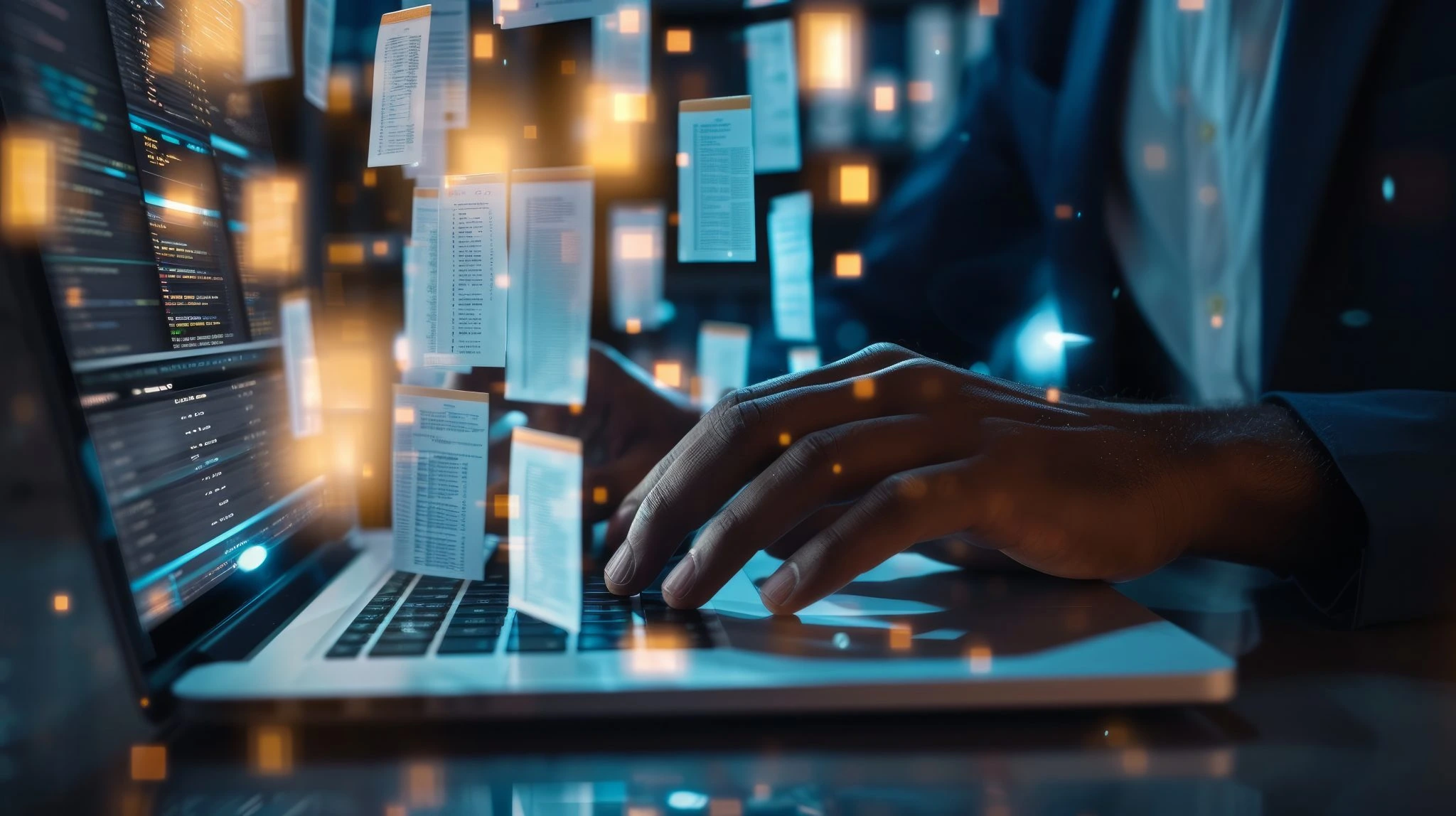- Upgrade your defenses, not your anxiety. Let’s Talk! Contact Us

The Evolution of Deepfake Technology: From Novelty to Social Threat
Step right up
and prepare to be amazed by the incredible world of deepfake technology! From
its humble beginnings as a novelty, this cutting-edge innovation has quickly
transformed into a social threat that has the potential to wreak havoc in our
digital landscape. So buckle up, because in this blog post, we'll take you on
an exciting journey through the evolution of deepfakes – from their origins to
their current status as a cybercrime menace. Get ready for a wild ride filled
with mind-bending impersonations, jaw-dropping advancements, and the urgent
need for action against this growing cyberthreat. Let's dive in and uncover the
secrets behind one of the most intriguing and dangerous technologies of our
time!
Understanding
Deep Fake Technology
Lights, camera,
deepfake! Before we delve into the dark underbelly of this technology, let's
start by understanding exactly what deepfakes are. At its core, a deepfake is
an artificial manipulation of media content – typically videos or images –
using advanced machine learning algorithms. These algorithms analyze and mimic
the facial expressions and speech patterns of real people to create incredibly
realistic digital impersonations.
So how does this
sorcery work? Well, it all begins with training a deep learning model on vast
amounts of data – in this case, thousands of images or videos of a target
individual. The model then learns to generate new content that seamlessly
blends the target's face onto another person's body or alters their appearance
in various ways.
The results can
be astonishingly convincing and often leave viewers questioning reality. From
celebrities delivering outrageous speeches they never actually made to
politicians appearing to say things they would never utter, deepfakes have
taken deceptive editing to mind-boggling levels. With such power at our
fingertips, it's crucial to understand both the possibilities and dangers that
come hand-in-hand with this rapidly evolving technology.
Types and
Uses of Deepfakes
Deepfakes have
come a long way since their inception, and today, they encompass a wide range
of types and uses that can often blur the line between reality and fiction. One
common type is face-swapping, where the likeness of one person is seamlessly
imposed onto another's body in videos or images. This technology has been used
for humorous purposes in entertainment media, allowing celebrities to appear in
films they never actually acted in! However, the potential dangers lie within
more nefarious applications.
Another type of
deepfake involves voice manipulation. By analyzing audio samples, advanced
algorithms can recreate someone's voice with astonishing accuracy. This opens
up possibilities for fraudsters to impersonate individuals over phone calls or
even create fake audio recordings as evidence. Imagine receiving a call from
your bank asking for personal details - only to find out it was an imposter
using deepfake technology!
In addition to
these individual-focused uses, deepfakes are also being employed on a larger
scale as tools for disinformation campaigns and political propaganda. With the
ability to fabricate realistic speeches or manipulate public figures'
statements, malicious actors can sow confusion among masses and manipulate
public opinion like never before.
As deepfake
technology continues to evolve rapidly, so do its potential applications - both
positive and negative. Understanding these different types of deepfakes is
crucial in order to stay vigilant against their misuse and protect ourselves
from falling victim to cybercrime or misinformation campaigns.
The Rise of
Deepfake Cybercrime
Picture this:
you're scrolling through your favorite social media platform, and suddenly, you
come across a video of a prominent politician saying outrageous things. Except,
it's not actually the politician speaking – it's a deepfake. Welcome to the
rise of deepfake cybercrime!
Deepfakes have
evolved from mere novelty to becoming a significant threat in our increasingly
digital world. These sophisticated manipulations use artificial intelligence algorithms
to create realistic videos or images that make it seem like someone is saying
or doing something they never did.
The implications
are staggering. Deepfakes can be used for political manipulation, spreading
misinformation, blackmailing individuals, and even defaming innocent people. In
recent years, we've seen malicious actors exploit this technology for financial
gain or personal vendettas.
Detecting and
combatting deepfakes poses immense challenges. With advancements in AI
algorithms and access to vast amounts of data online, creating convincing
deepfakes has become easier than ever before. The speed at which these
manipulated videos spread on social media platforms further complicates
matters.
But don't lose
hope just yet! Researchers and tech companies are actively working towards
developing tools and techniques to identify deepfakes effectively. From
analyzing facial movements frame by frame to using machine learning models
trained on large datasets – the fight against deepfake cybercrime is gaining
momentum.
As society
becomes more aware of the potential dangers posed by deepfakes, efforts are
underway to address these threats head-on. Governments around the world are
exploring legislation related to illegal creation and distribution of deepfake content
while collaborating with tech giants to develop detection technologies.
In conclusion
(oops!), there's no denying that as technology advances further into uncharted
territory with each passing day so does its dark side - cybercrime fueled by
powerful tools like deepfake technology! However, rest assured that experts are
actively combating this rising menace through research initiatives and
collaborative efforts between governments and tech companies alike! Stay
vigilant online folks; you never know when a deepfake might be lurking!
Challenges
in Detecting and Combatting Deepfakes
Detecting and
combatting deepfake technology poses several challenges that require innovative
solutions. One of the main hurdles is the rapid advancement of deepfake algorithms,
which makes it increasingly difficult to differentiate between real and
manipulated videos or images. As these algorithms evolve, so does their ability
to create more convincing deepfakes, making it challenging for traditional
detection methods to keep up.
Another
challenge lies in the sheer volume of content being generated on a daily basis.
With millions of videos and images uploaded online every minute, it becomes
nearly impossible for human moderators to manually review each piece of content
for authenticity. This necessitates the development of automated tools that can
efficiently scan vast amounts of data to identify potential deepfakes.
Furthermore, the
accessibility and ease-of-use of deepfake technology present yet another
challenge. As deepfake creation tools become more user-friendly and widely
available, anyone with basic technical skills can manipulate media without
leaving any obvious traces. This raises concerns about the spread of
disinformation campaigns or targeted attacks using realistic looking but
fabricated content.
In order to
address these challenges effectively, collaboration between researchers, tech
companies, policymakers, and law enforcement agencies is crucial. Developing
robust detection algorithms that leverage artificial intelligence (AI)
technologies such as machine learning can help identify subtle signs indicative
of manipulation. Additionally, implementing stricter regulations regarding the
use and dissemination of deepfake technology can act as a deterrent against
malicious actors.
While detecting
and combatting deepfakes may seem like an uphill battle at times due to
evolving techniques and widespread accessibility; efforts are being made by
various stakeholders to stay one step ahead in protecting individuals from this
emerging cyberthreat.

Efforts to
Identify and Address Deepfake Threats
In the
ever-evolving realm of technology, deepfakes have emerged as a pressing
concern. As this alarming trend continues to gain traction, experts are working
tirelessly to identify and address the threats posed by deepfake technology.
They understand that staying one step ahead is crucial in combating this
digital deception.
To tackle the
challenges posed by deepfakes, researchers are developing advanced algorithms
capable of detecting manipulated content with remarkable accuracy. By analyzing
various visual and audio cues, these algorithms can flag potential instances of
deep fakery. Additionally, collaborations between tech giants, academia, and
law enforcement agencies have led to the creation of specialized tools for
identifying and investigating deepfake-related crimes.
Moreover,
efforts are underway to raise awareness about the dangers associated with
deepfakes. Education plays a pivotal role in empowering individuals to
recognize and critically evaluate misleading content online. By promoting media
literacy and fostering a culture of scepticism towards questionable information
sources, we can build resilience against the impact of deepfake manipulation on
our society.
As we continue
our battle against malicious actors utilizing deepfake technology for nefarious
purposes, it is imperative that we remain vigilant while embracing innovative
solutions. With ongoing research advancements coupled with increased public
awareness campaigns and collaborative initiatives across sectors, there is hope
that we can effectively combat the growing threat posed by deepfakes in our
digital world.
Protecting
Against Deepfake Attacks
In this era of
advanced technology, where deepfakes are becoming more sophisticated and
prevalent, it is crucial to take proactive measures to protect ourselves from
potential harm. Here are some strategies that can help safeguard against
deepfake attacks:
1. Develop Advanced Detection Techniques:
Researchers and technology experts must continue to improve and refine
detection algorithms capable of identifying even the most convincing deepfakes.
Machine learning models can be trained on large datasets of authentic videos to
enhance their ability to discern manipulated content.
2. Promote Media Literacy Education:
Educating individuals about the existence and risks associated with deepfakes
is essential in building a resilient society. By enhancing media literacy
skills, people can become more critical consumers of information, questioning
the authenticity of online content before believing or sharing it.
3. Strengthen Online Platforms' Policies:
Social media platforms play a significant role in disseminating both genuine
and fake information. To combat the spread of malicious deepfakes, these
platforms need robust policies that address the issue effectively, including
strict guidelines for user-generated content verification.
4. Encourage Collaboration Across Industries:
Combating deepfake threats requires collaboration between various stakeholders
such as tech companies, cybersecurity firms, law enforcement agencies, and
policymakers. Sharing knowledge and resources will enable swift responses to
emerging threats while fostering innovation in combating evolving technologies.
5. Invest in Deepfake Countermeasures:
Governments should allocate resources towards research initiatives aimed at
developing tools specifically designed for detecting and countering deepfakes
effectively. This investment will aid in staying ahead of cybercriminals who
continually adapt their techniques.
By implementing
these protective measures collectively, we can minimize the adverse impacts
caused by malicious use of deepfake technology—preserving trust within our
digital ecosystem while ensuring that advancements in AI-driven technologies
benefit society without compromising its integrity.
Remember -
awareness is key! Stay vigilant when consuming online content; question what
you see before accepting it as truth. Together, we can navigate the evolving
landscape of deepfake technology indulging its authenticity is the best defense
against deepfake attacks.
Source: Internet
Reach out to us any
time to get customized forensics solutions to fit your needs. Check out
Our Google Reviews for a better understanding of our
services and business.
If
you are looking for Top Cybersecurity Firms in India, give us a call
on +91 91089 68720 / +91 94490 68720.
Search
Popular categories
Forensics
27Cybersecurity
16Awareness
4Current Trends
3Case Studies
1Latest blogs

Pre-Exit Forensics: Prevent Data Theft Before Employees Leave

Mac Forensics: Why It Matters for Cybersecurity, Compliance, and Corporate Protection

Why Digital Forensics is Crucial for Solving Data Breach Investigations
© Copyright 2024 Proaxis Scitech Private Limited
Write a public review